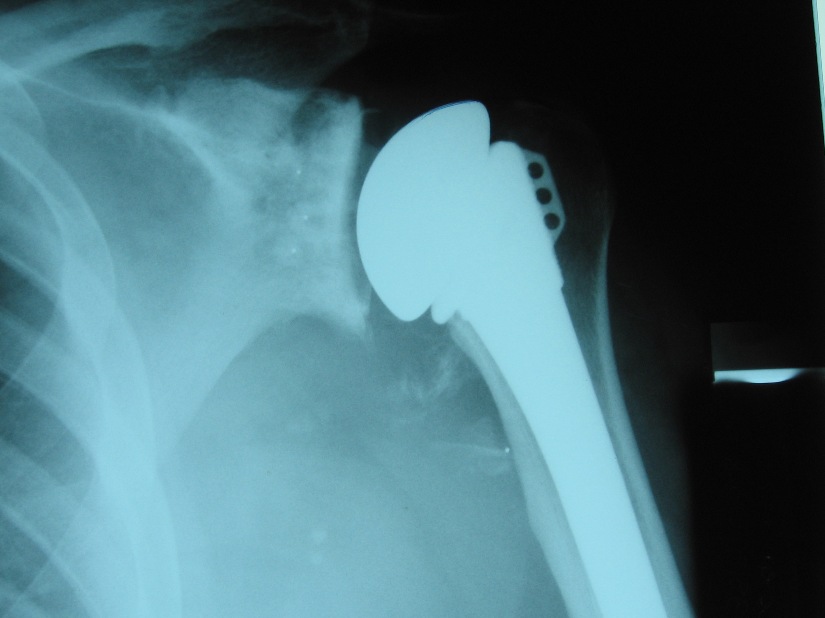
- see shoulder replacement discussion (total shoulder vs hemiarthroplasty vs reverse arthroplasty)
- the indications for total shoulder arthroplasty (versus hemiarthroplasty) are controversial;
- there is some controversy regarding pain relief and component survivorship;
- Gartsman GM, et al (2000), the authors compared hemiarthroplasty (24 shoulders) to TSR (27 shoulders);
- mean followup was 35 years;
- they noted significantly better pain relief and better internal rotation with total shoulder replacement;
- there was a trend for better patient satisfaction, function, and strength in TSR group;
- non concentric glenoid:
- non-concentric glenoid (ie posterior glenoid erosion) is a clear indication for glenoid resurfacing, since a congruent joint
is necessary for optimal function;
- references:
- A comparison of pain, strength, range of motion, and functional outcomes after hemiarthroplasty and total shoulder arthroplasty in patients with osteoarthritis of the shoulder. A systematic review and meta-analysis.
- Shoulder Arthroplasty with or without Resurfacing of the Glenoid in Patients Who Have Osteoarthritis
- Recentering the Humeral Head for Glenoid Deficiency in Total Shoulder Arthroplasty.
- Secondary rotator cuff dysfunction following total shoulder arthroplasty for primary glenohumeral osteoarthritis: results of a multicenter study with more than five years of follow-up.
- Exam:
- note the degree both preoperatively and postoperatively of scapulothoracic to glenohumeral motion;
- as noted by Friedman RJ (1997), patients with DJD of the shoulder reverse the normal 1:2 ratio of
scapulothoracic to glenohumeral motion ratio (this is not changed w/ arthroplasty);
- excessive external rotation:
- may indicated deficiency of subscapularis in which case, subscapularis can be augmented w/ an
Achilles tendon allograft;
- restricted external rotation:
- may indicated severe wear of the posterior glenoid, in which case the glenoid may have to be
reamed to a more neutral version;
- reference
- Prospective analysis of total shoulder arthroplasty biomechanics.

- Radiographs:
- note the relation of the tuberosity and the humeral head (optimal to reproduce the vertical offset)
- axillary view
- Surgical Technique:
- surgical exposure
- humeral preparation
- glenoid component
- trial reduction
- management of subscapularis - repair
- Post Op Care:
The position of sling immobilization influences the outcomes of anatomic total shoulder arthroplasty: a randomized, single-blind, prospective study.
blind, prospective study.
- references:
- Influence of Preoperative Factors on Outcome of Shoulder Arthroplasty for Glenohumeral Osteoarthritis
- A comparison of hemiarthroplasty and total shoulder arthroplasty in the treatment of primary glenohumeral osteoarthritis: results of a multicenter study.
- A prospective functional outcome study of shoulder arthroplasty for osteoarthritis with an intact rotator cuff.
- Conversion of painful hemiarthroplasty to total shoulder arthroplasty: Long-term results
- Quality-of-life outcome following hemiarthroplasty or total shoulder arthroplasty in patients with osteoarthritis. A prospective, randomized trial.
- AAOS: Guidelines on the Treatment of OA
- Bilateral Anatomic Total Shoulder Arthroplasty Versus Reverse Shoulder Arthroplasty

